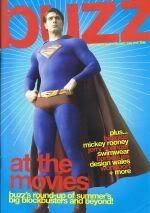Saw Week: Part I
The final Saw movie is released this Friday, and to mark the, um, occasion, I'm going to watch the six previous instalments this week, and then go and see the final one on the weekend. (It's gonna be a long week.) The mythology has become so elaborate and tangled that I want to be able to see Saw 3D in context; whether you love or hate the franchise, it's become an institution, as influential as any of the other long-running franchises, and I feel a strange obligation to see it out properly.
The first one is both better and worse than I remember it being. The main setup - two men are chained up in a disgusting underground bathroom somewhere and have to figure out a way to escape before their time runs out - is pretty effective, and the script is full of twists and turns. Initially, Dr Lawrence Gordon seems like the villain: he acts suspicious and creepy and generally seems like a complete asshole, but as the film progresses, it seems like the other man, Adam, has something to hide too. Through a series of flashbacks, we slowly start to piece things together. There's a sort-of serial killer on the loose who hates people wasting their lives and wants to force them to recognise their blessings via a series of elaborate and extremely violent traps; his habit of carving a jigsaw-shaped piece of skin out of his victims' bodies has led to the media dubbing him "Jigsaw". There's a creepy hospital orderly (played by Michael Emerson, aka Ben from Lost) who's got something to do with it; there's an obsessed ex-cop who's convinced Gordon is Jigsaw; and there's a corpse on the floor of the bathroom that might not be as dead as it seems...
Saw also introduces us to Amanda, a drug addict who finds a new purpose in life through her encounter with Jigsaw. She's only in a handful of scenes, and it's difficult to watch them without remembering everything that's to come. The Saw theme also makes its debut in this movie, sounding instantly iconic, as creepy and evocative as the Halloween theme, or Tubular Bells. The Saw mythology has grown so much since this movie that it's difficult to really see it for what it is, or what it was then; everything seems imbued with extra significance.
In 2004, Saw seemed like the scariest, most disgusting, most extreme film imaginable. I actually didn't see it in cinemas because I'd heard so much about the extreme torture in the movie, but now, looking back, it seems almost tame. There's not very much gore after all: and not counting the main chained-by-the-ankles trap at the centre of the film, we only see three of Jigsaw's elaborate mantraps. (There's the reverse beartrap, there's the room of razor wire, and there's a prototype of the drill chair that we'll see more of later.) All of them rely more on the audience's imagination than on showing too much too clearly (although Amanda pawing through a man's intestines to find the key to her trap is a little much). Saw does a lot with a little; Jigsaw's traps are horrifying because they play on your mind and make you wonder what you'd do if you had to face one of them, but there's very little actual torture going on. There's none of the prolonged suffering that will characterise some of the later movies in this series, or some of the later torture porn movies that cashed in on Saw's phenomenal success. And a lot of the scares (mostly to do with Gordon's wife and child, but also the sequence in Adam's apartment lit entirely by camera flash) really work. The writing and structure of Saw is a lot better than I think I ever gave it credit for.
But, and there had to be a but, the execution leaves a lot to be desired. Mainly, the acting is appalling. Cary Elwes, in particular, is awful. He's overly sinister to begin with, but it's when he's forced to show some emotion that everything falls apart. He's utterly unconvincing as a man afraid for his family; he's utterly unconvincing as a man afraid for his own life; and he's ... oh, he's just useless, really. Gordon's bizarre backstory, where he may or may not be having an affair with someone he works with, makes very little sense, and Elwes fails to sell any part of his emotional journey. Leigh Whannell isn't a particularly good actor, either (he demonstrates any kind of heightened emotion by getting really high-pitched) but he's passable, whereas Elwes almost ruins the film on more than one occasion by turning what should be a touching or frightening moment into squealing melodrama.
The editing, too, is horrible. The film's aesthetic is overdone now, but works nicely here; it's just the crazy quick-cutting that threatens to spoil it. There's a car chase near the end that consists of quick cuts between the two drivers' faces - it's presumably because car chases are difficult and expensive to shoot, but this weird cobbled together mess is just comical. The film is full of overly stylised quick cuts; it aims for slick but lands somewhere around "amateurish" instead. But it's forgiveable in a film as cheap and inventive as this one.
Saw is certainly a flawed film, and it's flawed in frustrating ways, because there's a fantastic idea at the heart of it, and lots of clever and creepy ideas packed into it. It could so easily have been brilliant, but instead it's just pretty good. Horror films have changed a lot since Saw's release, partly as a result of the success of Saw and Hostel, and it hasn't been for the better. It's difficult to see Saw with fresh eyes, without seeing the zillions of imitators that have used and reused every part of this movie. But if you can forget all that (and somehow ignore Elwes's inability to act) it's really pretty decent. I feel like I owe Saw an apology ... for now, anyway. At least until I get as far as Saw III.











No comments:
Post a Comment